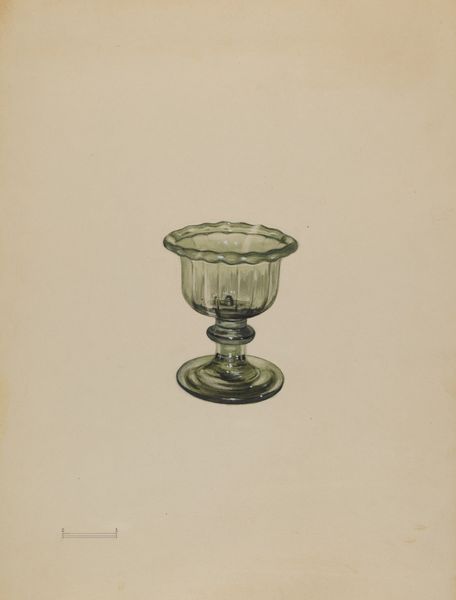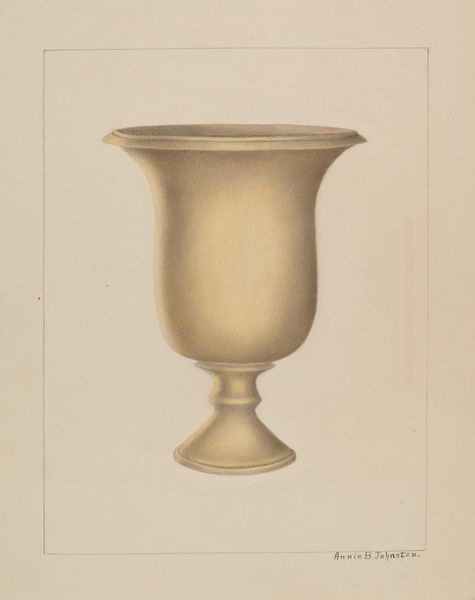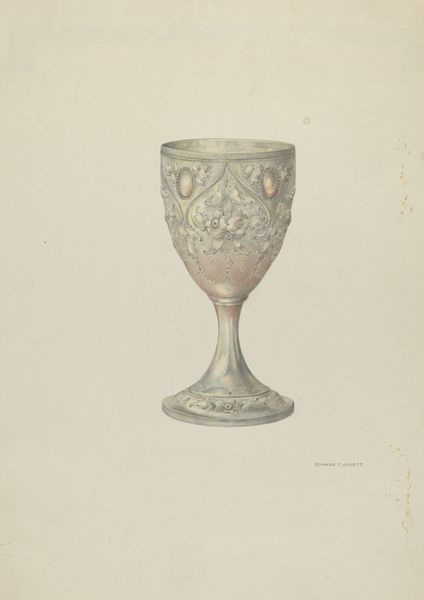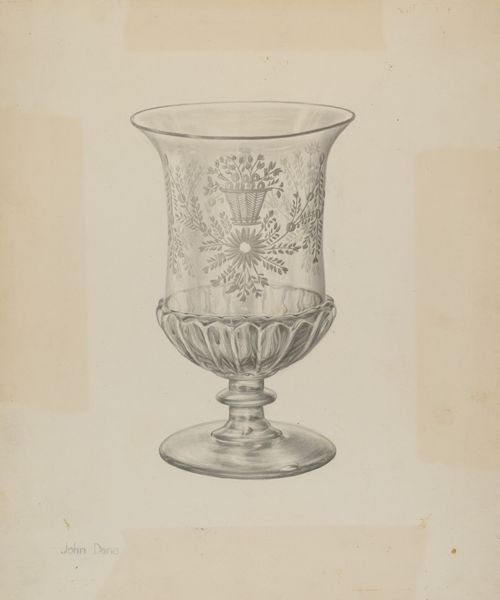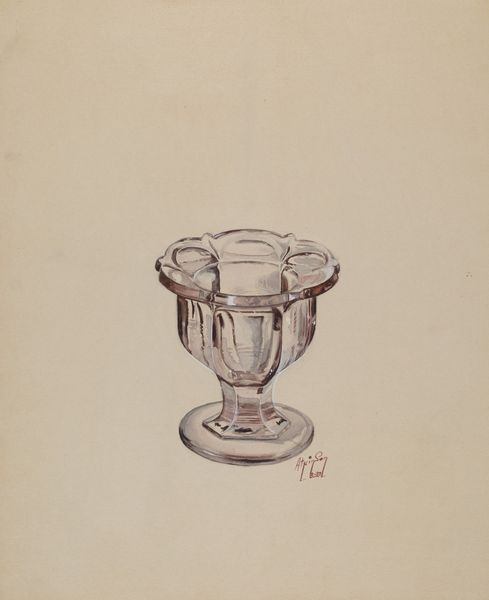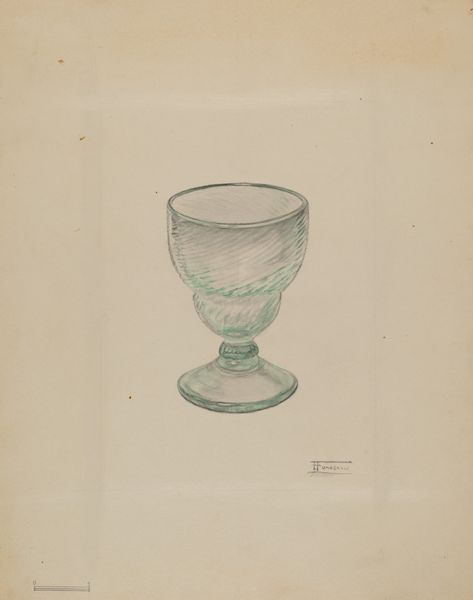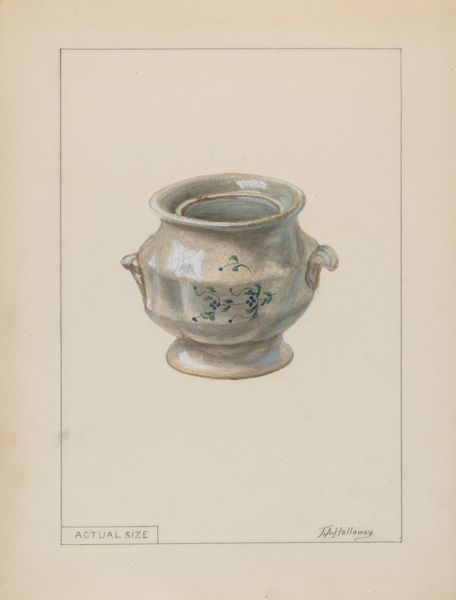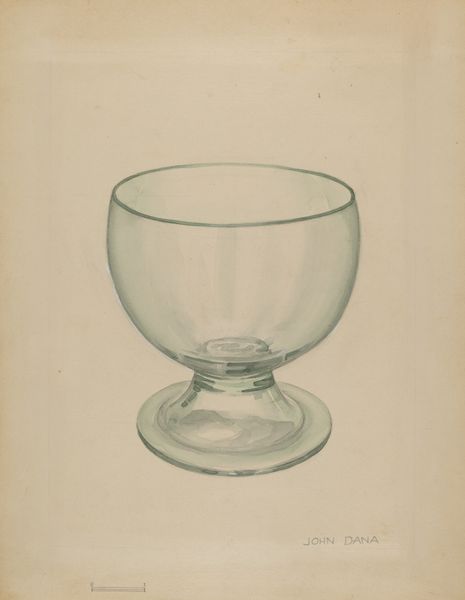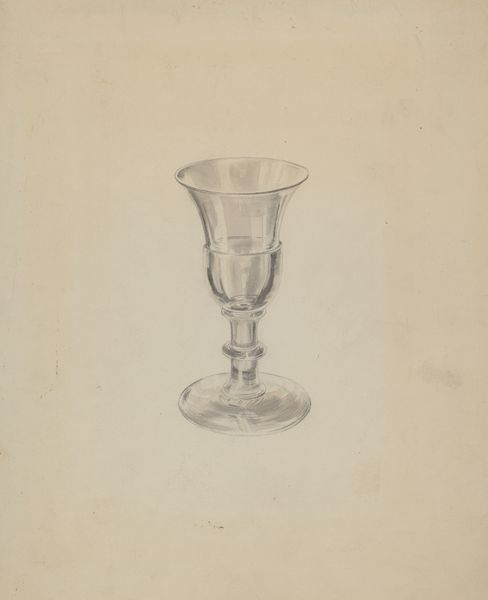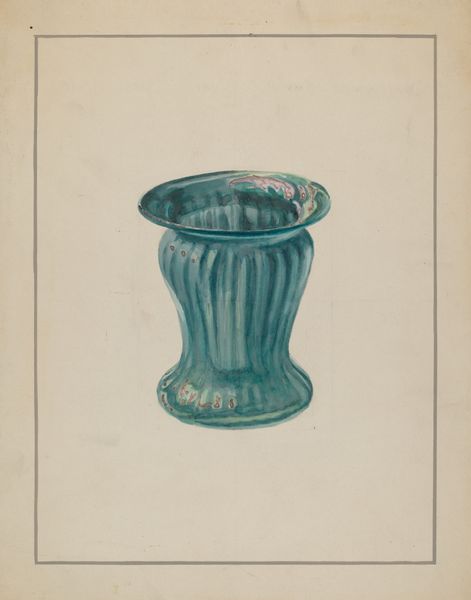
drawing, watercolor
#
drawing
#
water colours
#
watercolor
#
academic-art
#
watercolor
Dimensions: overall: 30.5 x 22.9 cm (12 x 9 in.) Original IAD Object: Drawn actual size.
Copyright: National Gallery of Art: CC0 1.0
Curator: Let's consider this watercolor drawing by William Vergani, "Egg Cup," dating back to about 1937. The artist’s chosen medium is watercolours over pencil. Editor: There's a subtle intimacy to it. The egg cup seems both fragile and precious against the pale background. The image really calls upon a classic depiction of domestic bliss. Curator: The composition is striking in its simplicity. A centrally positioned object, contained within the rectangular outline of the paper, that allows our eyes to explore the geometric components in harmonious relation. How do you find the detailing? Editor: The decorative foliage pattern has caught my eye – tiny floral elements running around the rim and adorning the cup’s body, providing a visual language rooted in more pastoral concepts of simple domestic enjoyment. In that era, I'd imagine these were prevalent symbols of idealized home life. Curator: True. Notice also how Vergani’s handling of light shapes our perception. Through very careful tonal gradients he lends the cup this near-sculptural three-dimensionality, thus turning it from a mundane item into an almost venerable one. Editor: The presence of a humble object is indeed interesting, but perhaps a touch of class commentary might enrich our analysis. This object may not seem to denote luxury, but I wonder what place fine porcelain would occupy at the dinner tables of 1937… the gold leaf indicating luxury… Curator: Certainly, the fine strokes indicate a precise construction of luxury even amidst apparent restraint. As the floral iconography might insinuate pleasant rural images, it simultaneously demonstrates a specific visual harmony. This makes it, in its own small way, represent broader aspirations that pertain more specifically to issues around social identity. Editor: Perhaps this invites viewers to remember or construct, such ideas and their own versions of what the iconography may have once denoted as concepts within society at large, the role of women and the structure of their social engagements within and surrounding mealtime. What is left unsaid through image. Curator: A valuable point. Seeing through a historical lens enriches our view into visual communication that invites deeper symbolic consideration to enhance form and medium relationship. Editor: A fresh viewpoint to enhance perception. Thank you.
Comments
No comments
Be the first to comment and join the conversation on the ultimate creative platform.
